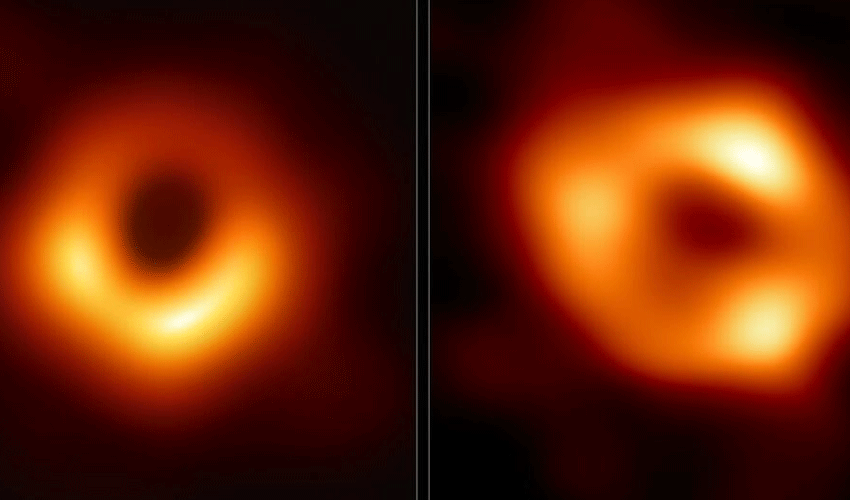Astronomers have unveiled the discovery of exceptionally powerful X-ray jets emanating from two ancient supermassive black holes. Each of these colossal jets extends for nearly 300,000 light-years, a distance almost three times the diameter of our Milky Way galaxy.
This groundbreaking finding, announced on June 9 at the 246th meeting of the American Astronomical Society in Anchorage, Alaska, is being lauded as a significant step towards a deeper understanding of the early universe. The research team, spearheaded by Jaya Maithil, a postdoctoral fellow at the Harvard-Smithsonian Center for Astrophysics, made this revelation utilizing data from NASA’s Chandra X-ray Observatory and the Karl G. Jansky Very Large Array (VLA).
“These quasars are like cosmic time capsules,” stated Dr. Maithil, referring to the supermassive black holes that fuel the jets. “If we understand them, we can understand how they were impacting the growth of their galaxy and the environment in which they resided.”
The black holes are situated at immense distances of approximately 11.6 and 11.7 billion light-years from Earth. This means the observed jets are glimpses of their existence when the universe was merely about three billion years old—a period characterized by the rapid expansion of galaxies and the supermassive black holes at their cores.
One of these jets, originating from a quasar designated J1610+1811, is vividly depicted in a Chandra image released alongside the findings. A faint purple line stretches outward from the quasar’s brilliant white core, conveying the extraordinary scale and intensity of the phenomenon. A second, fainter jet appears to extend in the opposing direction.
Dr. Maithil likened the difficulty of observing these jets to “looking for candlelight in close vicinity to a flashlight that’s blazing toward us,” underscoring the challenge of detecting such subtle structures across vast cosmic distances.
What renders this discovery particularly noteworthy is the fact that these jets remain discernible across billions of light-years. According to a paper accepted for publication in The Astrophysical Journal, the jets are likely illuminated by their interactions with the cosmic microwave background (CMB) radiation—the faint residual glow from the Big Bang. The study proposes that as the jets traverse through space, electrons within them collide with CMB photons, accelerating them to X-ray energies. This process, known as inverse Compton scattering, enables these ancient jets to remain detectable even in the present day.
“These black holes are transforming the first light of the universe into high-energy jets,” Maithil explained, emphasizing the potential role such structures played in shaping their host galaxies and the surrounding cosmic environments in the nascent universe.



